

Geisha are iconic figures of Japanese culture, yet many visitors still wonder who they truly are. Are they the same as maiko (舞妓, maiko, apprentice) or geiko (芸妓, geiko, Kyoto’s term for geisha)?
In this guide, we explain their history, roles, and differences, while exploring authentic ways to experience geisha culture through tea ceremonies, dinners, and seasonal performances.
We also debunk myths and share etiquette tips so you can appreciate this living tradition with respect.
What Is a Geisha? Understanding the Role in Japanese Culture
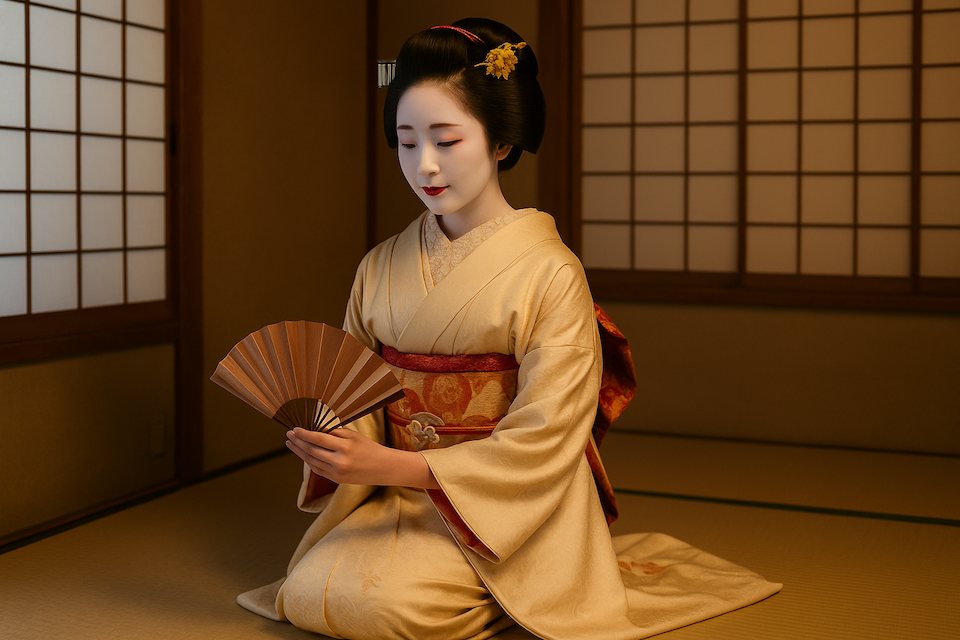
Geisha (芸者, geisha, meaning “art person”) are professional entertainers in Japan, trained in traditional arts such as dance, shamisen music, singing, tea ceremony, and poetry. For centuries, they have embodied Japanese elegance, appearing in silk kimono with white-painted faces and refined manners.
But what exactly do geisha do, and how did this profession begin? Let’s explore their origins and cultural significance.
The Origins of Geisha: From the Edo Period to Today
The history of geisha dates back hundreds of years. The first “geisha” were men, but by the mid-18th century women became the central figures, offering music, dance, and conversation rather than romantic services. During the Edo period (1603–1868), strict rules distinguished geisha from courtesans (oiran), such as tying the kimono obi at the back, and geisha earned respect as artists who “sold art, not love.”
Through the Meiji era and WWII, geisha faced challenges, from new labor laws to the wartime closure of teahouses. Their image was blurred by imposters serving foreign troops, but after the war authentic geisha revived traditional arts. Numbers fell from about 80,000 in the 1920s to around 1,000 today, mainly in Kyoto and Tokyo. Despite this decline, geisha continue to perform at ozashiki banquets and cultural events, preserving Japan’s classical heritage.
Cultural Significance: Geisha as Keepers of Traditional Arts
Geisha are not relics of the past but active guardians of traditional Japanese culture. Trained in dance, music, tea ceremony, and poetry, they create an atmosphere of elegance at banquets and seasonal performances. Known as the “flowers” of the karyūkai (花柳界, “flower and willow world”), they embody refinement and the spirit of omotenashi (おもてなし, hospitality).
In Kyoto’s Gion, geiko preserve exclusive arts such as the Kyo-mai dance, designated an intangible cultural asset. Many geisha houses (置屋, okiya) and tea houses (お茶屋, ochaya) are run by women, ensuring mentorship and continuity of tradition. Modern geisha also contribute to tourism and cultural exchange, appearing at festivals like Kyoto’s Setsubun — connecting tradition with today’s visitors.
In sum, geisha remain respected professionals who preserve classical arts and hospitality, keeping Japan’s cultural legacy alive in the 21st century.
Common Misconceptions About Geisha
One of the biggest misconceptions is that geisha are prostitutes. In reality, geisha are highly trained entertainers in dance, music, and conversation. Myths like Memoirs of a Geisha created confusion, but since prostitution was banned in 1956, geisha have focused solely on the arts. As the saying goes, “geisha sell art, not love.”
Geisha are also often confused with oiran courtesans, who tied their obi in the front and paraded publicly, while geisha tied theirs at the back and performed refined arts in private. Another myth suggests geisha live oppressed lives, but today women enter the profession by choice and may retire freely — showing their independence and agency.
Though Kyoto’s geiko and maiko are the most famous, geisha communities also exist in Tokyo, Kanazawa, and Niigata. They are not public performers for casual photography; geisha seen on Kyoto’s streets are usually heading to private engagements. Respecting these boundaries allows visitors to appreciate geisha as cultural artists and ambassadors, ensuring encounters are meaningful and respectful.
Geisha, Maiko, and Geiko: What’s the Difference?
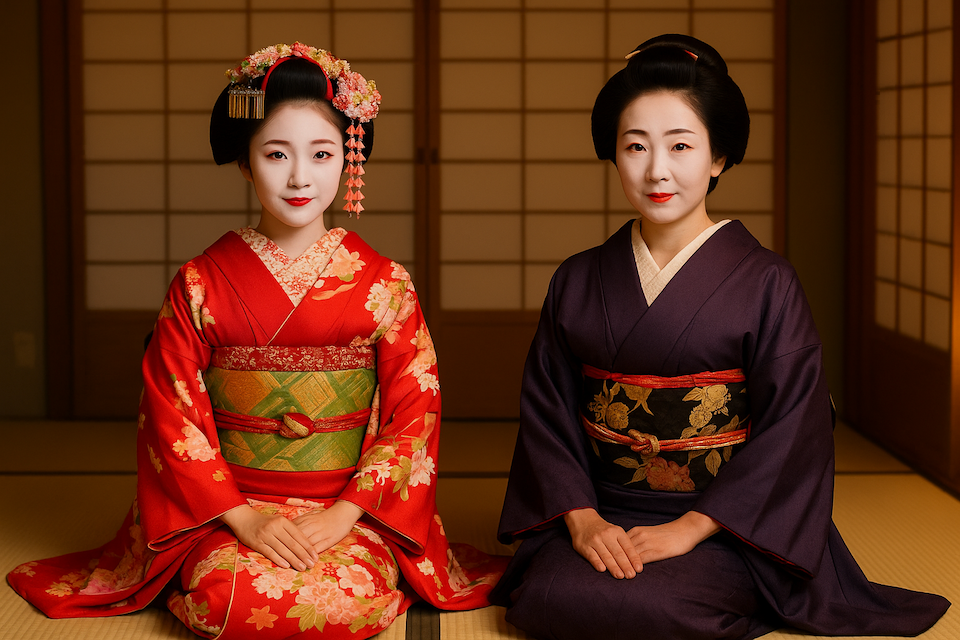
Geisha, geiko, and maiko share similar appearances—kimono, makeup, and hairstyles—making them hard to distinguish for visitors. Regional terminology also adds to the confusion. In Kyoto, many tourists wear rental kimono, which makes it even harder to tell who is authentic.
This section clarifies their roles, ages, appearances, and regional naming differences.
Roles and Status
- Maiko
Apprentices still in training, performing dances and learning shamisen while entertaining at banquets. They represent youth and charm. - Geiko / Geisha
Fully trained professionals who have completed years of apprenticeship. They embody refinement and serve as cultural entertainers through dance, music, and conversation.
What they share is that both preserve Japan’s traditional arts and create refined spaces of hospitality.
Age and Career
- Maiko
Typically begin training around age 15 and graduate in their early twenties. - Geiko / Geisha
Adults in their twenties and older. They transition through the erikae (collar-turning) ceremony, which marks independence as professionals.
Maiko symbolize youthful artistry, while Geiko represent maturity and mastery.
Appearance Differences (At a Glance)
| Feature | Maiko (Apprentice) | Geiko / Geisha (Professional) |
|---|---|---|
| Collar | Red or embroidered | White (seniority) |
| Kimono & Obi | Bright, long-sleeved kimono with trailing darari obi | Subdued colors, shorter sleeves, compact obi |
| Hair | Natural hair, styled with elaborate kanzashi | Wig (Shimada style), minimal ornaments |
| Makeup | White makeup, juniors paint only the lower lip | Natural look, white makeup only for stage |
| Footwear | Tall okobo clogs | Flat zori sandals |
| Overall impression | Youthful, lively, colorful | Elegant, poised, understated |
Knowing these visual clues helps visitors tell them apart respectfully.
Regional Naming Differences
- Kyoto: Apprentices are called maiko; professionals are geiko.
- Tokyo & elsewhere: Geisha is the common term.
- Kanazawa: Locally called geigi.
Using the wrong term in Kyoto can be seen as disrespectful, so saying geiko there shows cultural awareness.
No matter the name, all share the same identity as women dedicated to traditional Japanese arts.
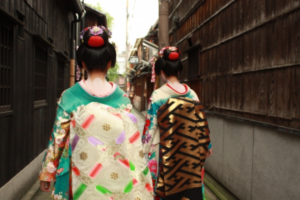
Experiencing a Geisha in Japan: How to Book an Authentic Encounter

Understanding how to experience geisha culture today helps visitors choose the style, setting, and budget that best suit them. Encounters range from exclusive ozashiki banquets to accessible tea ceremonies and public performances, with Kyoto, Tokyo, and Kanazawa offering unique regional opportunities.
Exclusive Experiences: Ozashiki Banquets
An ozashiki (お座敷) is a traditional banquet held in a tatami-mat room, usually inside a ryotei (料亭, traditional restaurant) or ochaya (お茶屋, teahouse). Guests enjoy a multi-course kaiseki meal while geisha and maiko perform elegant dances, play shamisen music, and host interactive ozashiki games.
These evenings balance refinement with warmth, creating a rare glimpse into centuries-old traditions. Advance reservations are essential, and dress codes usually require smart casual or formal attire.
Accessible Experiences: Tea Ceremonies and Dance Performances
For travelers with limited time, shorter and more affordable options are available. Maiko-led tea ceremonies allow guests to experience chanoyu (茶の湯, Japanese tea ceremony) in an intimate setting, often accompanied by seasonal sweets and the chance for light conversation.
Public dance performances, such as Kyoto’s Miyako Odori or Gion Odori, bring together dozens of geiko and maiko on stage, showcasing their artistry to larger audiences. These shows are among the most accessible and popular entry points for appreciating geisha culture.

Regional Highlights: Kyoto, Tokyo, and Kanazawa
Kyoto – Kyoto is the cultural heart of geisha tradition, home to the five famous hanamachi (祇園甲部, 先斗町, 宮川町, 上七軒, 祇園東). In the evenings, visitors may glimpse maiko and geiko heading to appointments in lantern-lit alleys. Seasonal odori performances are signature events, and advance reservations are recommended for popular shows.
Tokyo – The capital maintains six active geisha districts, including Shinbashi, Akasaka, Asakusa, Kagurazaka, and Mukojima. Kagurazaka, nicknamed “Little Kyoto”, is especially known for its geisha presence and hosts the Kagurazaka Odori each summer. Organized dinners with geisha are also possible in Asakusa and other neighborhoods.
Kanazawa – Once a wealthy castle town, Kanazawa preserves its heritage in three teahouse districts: Higashi Chaya, Nishi Chaya, and Kazue-machi. Visitors can join programs like “Geisha Evenings” at Kaikaro Teahouse, or explore daytime museums such as Shima Teahouse, which displays kimono, instruments, and historic entertainment rooms.
Booking and Practical Tips
While some experiences remain invitation-only, many are now accessible through official venues, tourism offices, or travel agencies.
Advance booking is highly recommended, especially for seasonal performances or private banquets, as tickets and reservations often sell out quickly.
These shows highlight Kyoto’s seasonal traditions and artistry, giving audiences a rare chance to see multiple geisha performing together. Tickets often sell out quickly, so advance booking is highly recommended.

Geisha Kimono and Makeup: Iconic Look of Traditional Japan
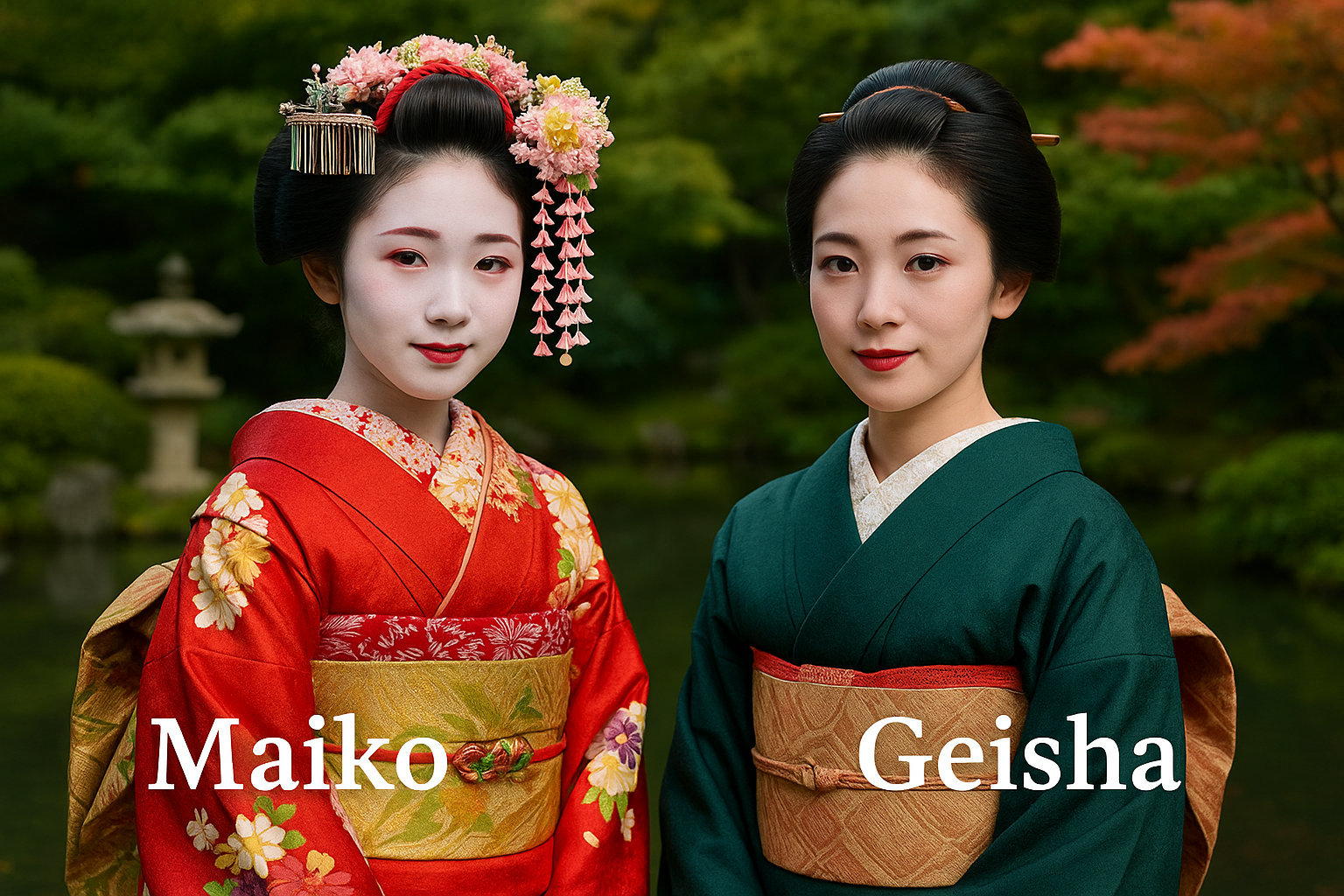
Understanding the appearance of geisha and maiko is key to appreciating their artistry. Their clothing, hairstyles, and makeup all carry deep symbolism, and each detail reflects age, rank, and tradition. The following breakdown highlights the major differences.
| Feature | Maiko (舞妓, apprentice) | Geisha (芸者, professional) |
|---|---|---|
| Kimono & Obi | Bright, colorful kimono with long furisode sleeves; trailing darari obi (~6m) with okiya crest | Subdued kimono in deep colors; shorter sleeves; compact taiko musubi obi |
| Hairstyle & Kanzashi | Natural hair styled in elaborate forms (Wareshinobu, Ofuku, Sakkou); ornate seasonal kanzashi (e.g., cherry blossoms in April, maple leaves in October) | Wig in refined Shimada style; minimal ornaments, often just a comb or pin |
| Makeup | Full white face makeup; red + black eye accents; only lower lip painted at first, both lips later | Often natural face; white makeup mainly for stage; both lips fully painted in elegant style |
Geisha Etiquette and Photography: What Tourists Should Know
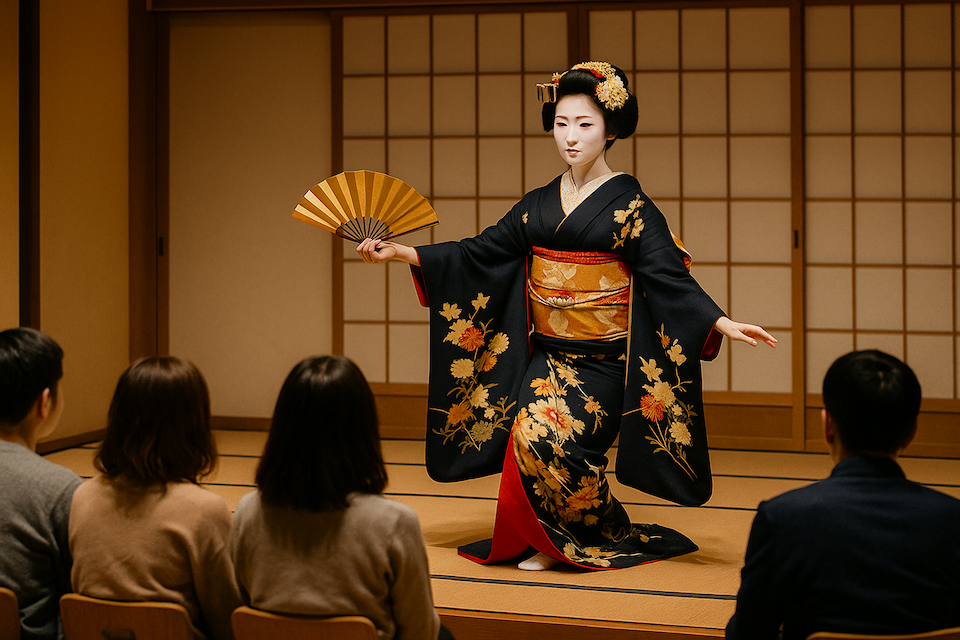
Before joining a geisha experience, it’s important to know the basic rules of etiquette. Many visitors have similar questions about photography, behavior, and proper manners. Here are the most common FAQs to help you enjoy geisha culture respectfully.
Q. Can I take photos of geisha or maiko?
Yes, but only with permission. In Kyoto’s Gion district, chasing or blocking geisha for photos is prohibited and can result in fines. Respectful photography is only allowed at public events or cultural programs.
Q. What should I wear to a geisha experience?
Smart casual or formal attire is best. Avoid shorts, flip-flops, or overly casual clothing when attending a dinner or tea ceremony.
Q. How should I behave when talking or drinking with geisha?
Geisha are entertainers, not “performers on demand.” Enjoy light conversation, accept sake politely, and follow the flow of the host’s instructions.
Q. What happens if I arrive late?
Punctuality is key in Japan. Arriving late disrupts the event and is considered disrespectful. Always aim to arrive a few minutes early.
Where to Book the Best Geisha Experiences in Kyoto and Beyond
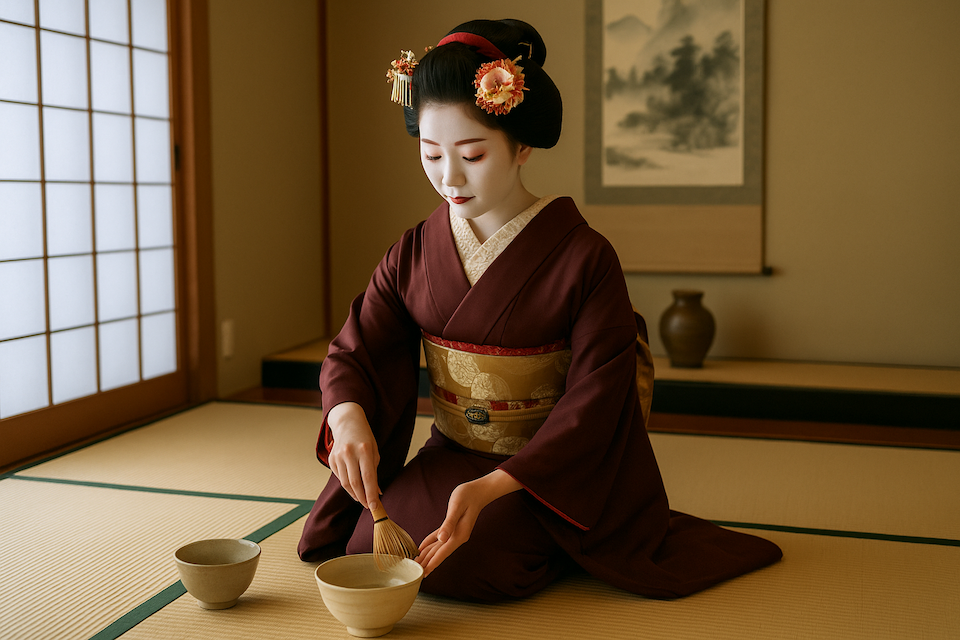
For those who want more than just a glimpse on the streets, there are many accessible ways to experience geisha culture firsthand. From tea ceremonies with maiko to private banquets with geiko, different cities across Japan offer unique opportunities.
Kyoto remains the cultural heart, but Tokyo, Kanazawa, and other regions also preserve these traditions. Knowing where to book ensures that your encounter is authentic, respectful, and unforgettable.
Kyoto Maikoya: Tea Ceremony, Dress-Up, and Performances
Kyoto Maikoya is one of the most popular and accessible venues for experiencing geisha culture, especially for international visitors. Here, guests can participate in tea ceremonies led by maiko, learning the refined movements of chanoyu (茶の湯, chanoyu, tea ceremony) while enjoying matcha and seasonal sweets.
Visitors also have the chance to dress in an elegant kimono (着物, kimono), complete with proper styling, which makes for memorable photos. In addition, the program includes traditional dance and shamisen performances, allowing you to see the artistry of geisha culture up close. Sessions are guided in English, making Kyoto Maikoya an excellent choice for first-time visitors who want an authentic yet approachable introduction to the world of geisha.
| Category | Details |
|---|---|
| Name | Kimono Tea Ceremony KYOTO MAIKOYA |
| Address | 329 Ebiyachō, Gokomachi-dori Sanjō sagaru, Nakagyō-ku, Kyoto, 604-8076, Japan |
| Phone | +81-75-606-5303 |
| Access | ・7 min walk: Hankyu Kawaramachi Station, Exit 9 ・About 10 min walk: Keihan Gion-Shijō Station |
| Opening Hours | 9:00 AM – 6:00 PM (Daily) |
| Official Site | Kimono Tea Ceremony KYOTO MAIKOYA |
| Notes | Other branches are also available. Please check the official website for details. |

Gion and Higashiyama: The Heart of Geisha Culture

Gion and Higashiyama are Kyoto’s most famous hanamachi (花街, geisha districts), where you may occasionally see maiko walking gracefully between appointments. The atmosphere of traditional machiya houses, red lanterns, and stone-paved alleys creates a timeless setting that feels like stepping back in time.
Seasonal odori (舞踊, dance) such as the Miyako Odori in spring or Gion Odori in autumn showcase centuries-old artistry, offering one of the most accessible ways for visitors to witness authentic geisha culture. For a more personal encounter, reservations at ochaya or ryotei can include geisha entertainment with dance, music, and conversation.
Many of these experiences can now be arranged through travel agencies or hotel concierges with English support, making Gion and Higashiyama not only the historical heart but also the most practical place to immerse yourself in geisha tradition today.
| Category | Details |
|---|---|
| Access | ・5–10 min walk: Gion-Shijō Station (Keihan Line) ・10–15 min walk: Kawaramachi Station (Hankyu Line) ・Near landmarks such as Yasaka Shrine and Kiyomizu-dera Temple |
| Best Time | Early evening (around 5:30–8:00 PM), when maiko and geiko are likely to be seen on the way to engagements |
| Official Info | Japan Endless Discovery |
| Notes | Many encounters are chance sightings. For guaranteed experiences, book performances or cultural programs in advance. |
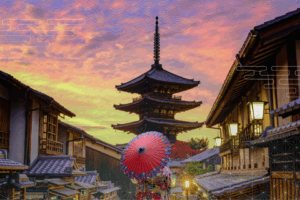
Alternative Locations: Kanazawa and Tokyo
While Kyoto is the best-known hub for geisha, other cities also preserve vibrant traditions worth exploring.
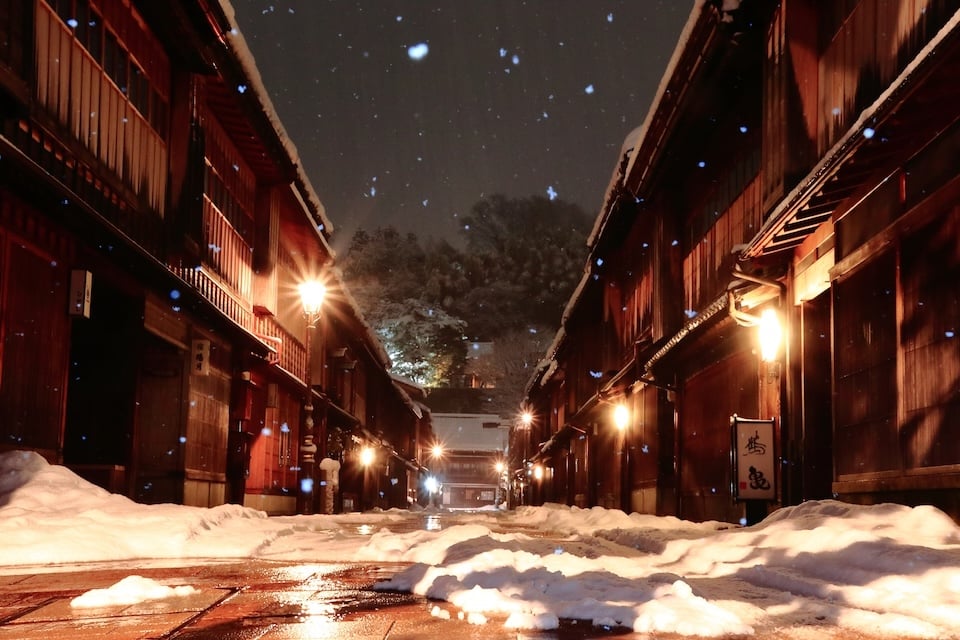
Kanazawa (金沢, Kanazawa) retains its charm in preserved teahouse districts like Higashi Chaya, Nishi Chaya, and Kazue-machi.
Visitors can join evening programs such as “Geisha Evenings” at Kaikaro Teahouse, where geigi perform dances, shamisen, and games. By day, historic venues like Shima Teahouse open as museums, blending living tradition with cultural preservation. This makes Kanazawa a more intimate alternative to Kyoto.
| Category | Details |
|---|---|
| Access | ・10–15 min bus ride from JR Kanazawa Station to Higashi Chaya District ・Short walk to Nishi Chaya and Kazue-machi areas |
| Best Time | Evening programs such as “Geisha Evenings” at Kaikaro Teahouse, daytime visits to Shima Teahouse museums |
| Official Info | Higashi Chaya District Portal site |
| Notes | Kanazawa offers a more intimate atmosphere compared to Kyoto. Many teahouses open as museums during the day, showing kimono, instruments, and interiors. |

Tokyo, with six active hanamachi (Shinbashi, Akasaka, Asakusa, Yoshicho, Kagurazaka, Mukojima), offers a different experience. Geisha here are less visible on the streets but remain active at private banquets in ryotei.
Kagurazaka, often called “Little Kyoto,” hosts the Kagurazaka Odori, while Asakusa offers organized dinners with kaiseki cuisine and geisha entertainment. For travelers already in the capital, Tokyo provides a convenient way to encounter geisha without a special trip to Kyoto.
| Category | Details |
|---|---|
| Access | ・Shinbashi and Akasaka: Central Tokyo, easy access by subway (Ginza, Marunouchi, and Hibiya lines) ・Asakusa: 5 min walk from Asakusa Station (Tokyo Metro / Tobu Skytree Line) ・Kagurazaka: 10 min walk from Iidabashi Station (JR / Tozai Line) |
| Best Time | Summer festivals (Kagurazaka Odori), or evenings when ryotei host private banquets |
| Official Info | Tokyo Shinbashi Kumiai |
| Notes | Geisha are less visible in public, but experiences can be arranged through ryotei or cultural programs. Kagurazaka is often called “Little Kyoto.” |
Together, Kanazawa and Tokyo expand the possibilities of geisha culture, each adding its own regional flavor to Japan’s cultural landscape.
Frequently Asked Questions About Geisha
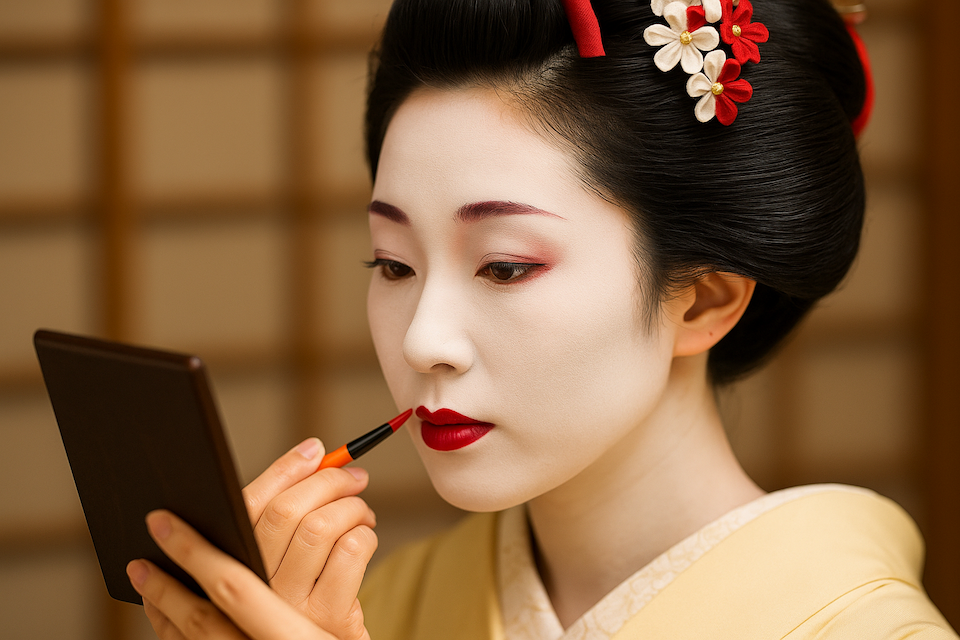
For many visitors, geisha remain mysterious figures surrounded by myths and misconceptions. To help clarify, here are answers to the most common questions—covering everything from whether geisha still exist today to the difference between geisha and courtesans. By understanding these facts, you can approach any geisha encounter with greater respect and appreciation.
Do Geisha Still Exist Today?
Yes. As of 2025, around 1,000 geisha and maiko remain active across Japan. Kyoto’s five hanamachi host about 150 geiko and 60 maiko, while smaller hanamachi survive in Tokyo, Kanazawa, and Niigata. Though numbers have declined from nearly 100 districts in the early 20th century, efforts are underway to preserve this tradition.
Can Anyone Become a Geisha or Maiko?
Traditionally, maiko training begins after middle school, around age 15. Apprentices live in okiya (置屋, geisha houses) and undergo years of training in dance, shamisen, and tea ceremony. After several years, a maiko graduates to become a geiko or geisha. Today, entry is still competitive, but cultural preservation programs encourage new recruits.
Do Geisha Sell Their Virginity? Debunking the Myth
One of the biggest misconceptions is that geisha sell sexual services.
This myth partly stems from misinterpretations during the postwar era and films like Memoirs of a Geisha. In truth, geisha sell their artistic performances—dance, music, conversation—not sex. The confusion with courtesans (花魁, oiran) from the Edo period created the stereotype, but modern geisha firmly maintain their role as professional entertainers and cultural artists.
Are There Male Geisha?
Yes, though rare. Historically, male performers called taikomochi (太鼓持ち, taikomochi) acted as storytellers and entertainers in banquets. Today, female geisha dominate the profession, but a few men still practice similar roles, continuing the lesser-known male side of the tradition.
Challenges Facing Geisha Today
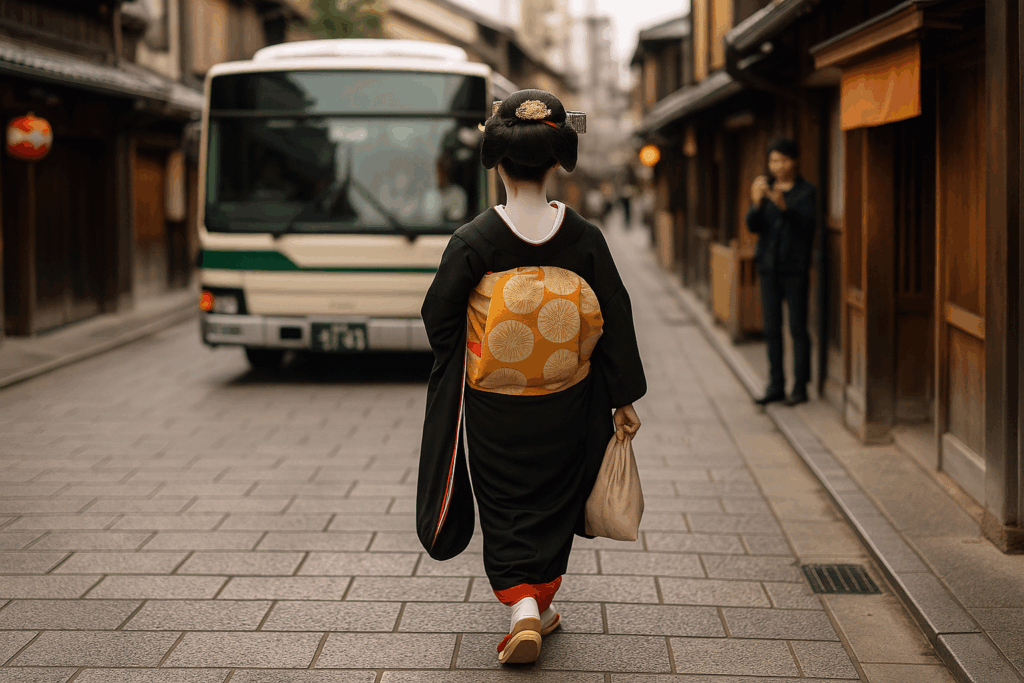
While geisha culture continues to inspire admiration, it also faces real challenges in modern Japan. The number of active geisha has declined to about 1,000 nationwide, compared to tens of thousands a century ago. One key issue is succession: fewer young women are choosing the demanding training required to become a maiko, leading to concerns about who will carry the tradition forward.
Another challenge is tourist etiquette. In Kyoto’s Gion, some visitors have disrupted the atmosphere by chasing maiko for photos or entering private alleys without permission. This has led to stricter local regulations, including fines for inappropriate behavior.
Finally, the geisha world is adapting to the pressures of modernization. Some districts now hold public events, collaborate with tourism boards, and utilize digital media to raise awareness while preserving their traditions. These efforts highlight the balance between maintaining authenticity and remaining relevant in the 21st century.
Ready to Experience the World of Geisha for Yourself?
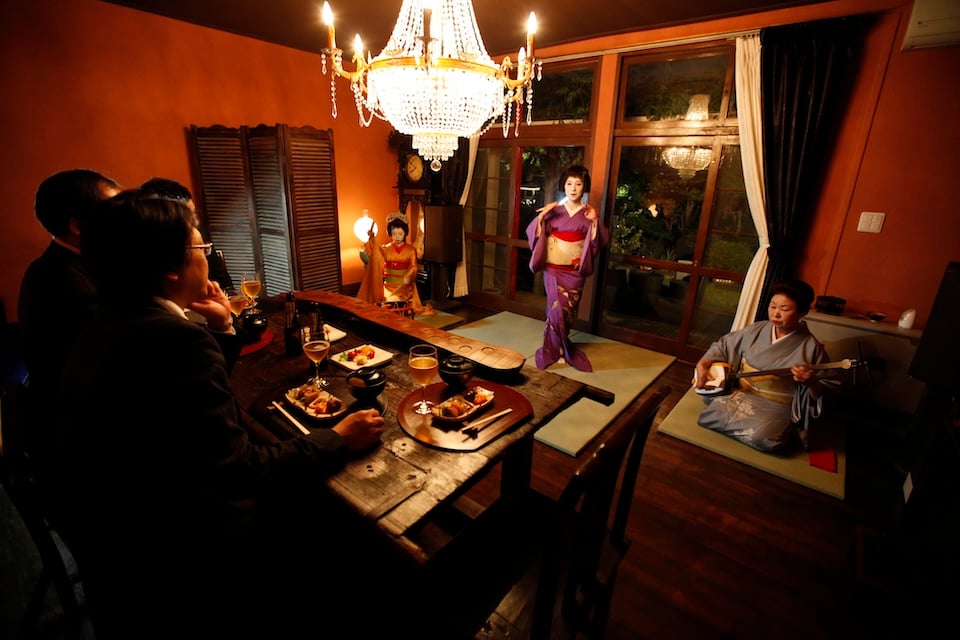
Experiencing geisha culture firsthand transforms curiosity into deep appreciation. From sharing tea with a maiko in a kimono to attending a refined geiko performance, each encounter reveals the artistry behind this living tradition.
Authentic geisha experiences require proper cultural guidance and advanced arrangements. For visitors interested in respectful encounters with Japan’s living heritage, connecting with established cultural specialists ensures both meaningful interactions and appropriate etiquette—from tea ceremony protocols to proper conversation topics.
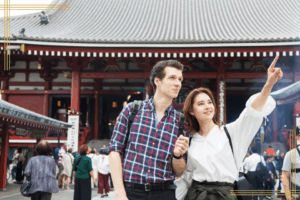

旅をこよなく愛するWebライター。アジアを中心に16の国にお邪魔しました(今後も更新予定)。
ワーホリを機にニュージーランドに数年滞在。帰国後は日本の魅力にとりつかれ、各地のホテルで勤務。
日本滞在が、より豊かで思い出深いものになるように、旅好きならではの視点で心を込めてお届けします!





